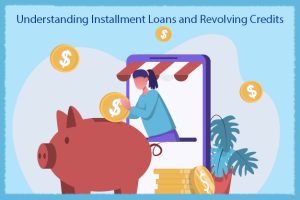 Is buying a car or a house is in your near future plans? Do terms like revolving credit, installment loans etc. confuse you? Not sure what factors influence your credit card score? Read on further to get an easy understanding of these financial jargons.
Is buying a car or a house is in your near future plans? Do terms like revolving credit, installment loans etc. confuse you? Not sure what factors influence your credit card score? Read on further to get an easy understanding of these financial jargons.
Of the different types of loans provided to borrowers, each loan typically falls under either of the two categories – installment loan or revolving credit. Though both the installment loan and revolving credit involve lending money and repayment with certain interest, they differ in the limiting amount, repayment patterns, and the possible number of credit transactions. When lending money is under consideration, it is very important to have a complete knowledge of these loans so as to make an appropriate decision and manage the credit wisely.
Installment Loan:
The installment loan is also called as close-end loan as the amount of money is pre-approved and fixed. It is usually considered when the amount required is huge. Example for installment loans: car loan, housing loan, mortgage loan, etc. The money has to be repaid within predetermined duration referred to as ‘loan term’, over which the principal is deducted gradually with added interest. The loan term has a set start and end date and can be used to determine the monthly payment. The longer the loan term, the smaller would be the monthly payment and vice versa. If an additional credit is required one has to apply for another loan. As there would be a prior idea on the monthly payment and duration by which it has to be repaid it imparts a sense of responsibility and does not remarkably affect the credit score.
Revolving Credit: Revolving credit is called as an open-end loan as the amount is not fixed before hand and also does not have a set payment plan. It gives the flexibility to borrow the money as and when required provided it is within the prescribed credit limit. The amounts issued per each credit transaction are considered as lines of credit. Credit card is a good example of revolving credit. Unlike in the installment loans, the monthly payment in revolving credit goes up and down depending on the amount borrowed for that specific month. The interest rates are also way higher than in the installment loans. Though a well-maintained revolving credit shows the ability to manage the financials effectively, it significantly influences the credit score. The higher the outstanding payment balance, the lower would be the credit score. Hence the revolving credits must be monitored with utmost care.
In recent times it has become inevitable to maintain both installment and revolving credits. Handling both the credits with timely repayments depicts well in the credit history and also reflects the capability to manage the money at different levels.